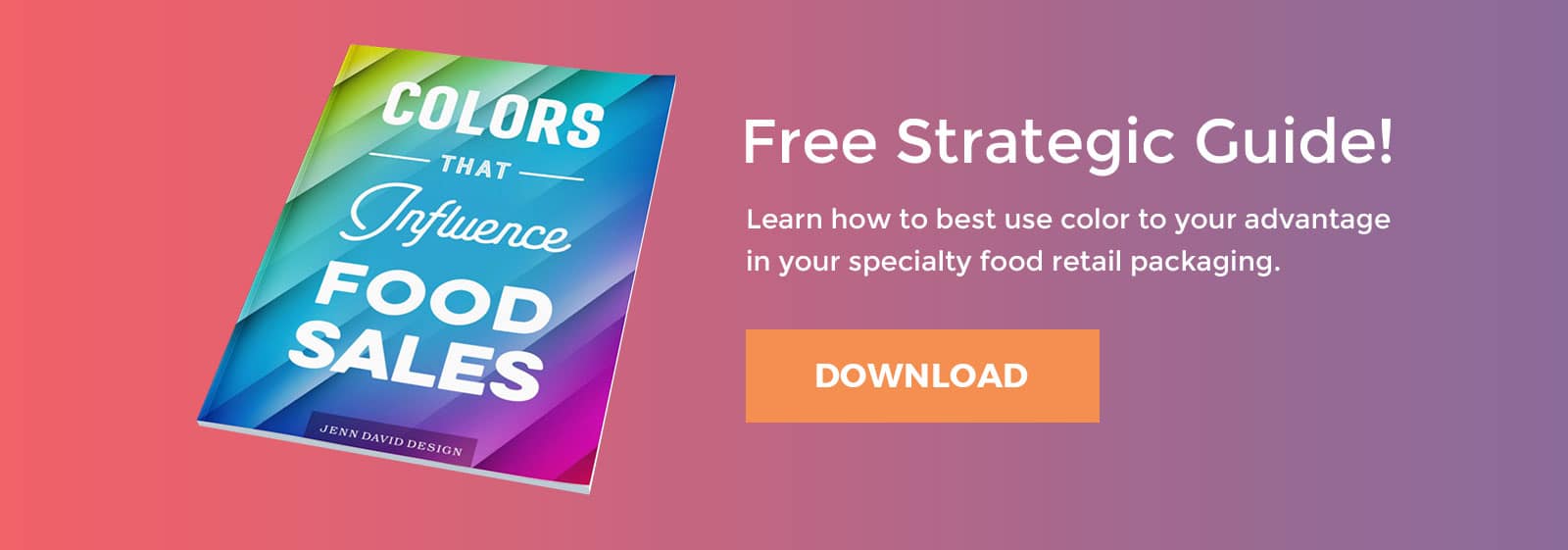Weight Watchers Food Near Me
Color influences consumers not only on the conscious level but also on the subconscious level. Color and food pairings can be especially powerful by leveraging the emotional connection to taste. How can you best use color to your advantage in your gourmet food retail packaging?

Red and yellow are the chief food colors, evoking the tastebuds and stimulating the appetite. Both red and yellow are also effective at grabbing attention. The fast food industry has claimed this combination for a good reason—because it is effective. In the gourmet food arena, you of course want to avoid a fast food connotation, however these colors can still be very effective when used on their own and/or in different pairings.
Orange, a blend of red and yellow, naturally lends itself to food as another appetizing color. Orange has been a trendy color for some time now, so be aware of that when using it—its popularity could either work for or against your product depending on its context and intent.
Green connotes eco-friendliness, healthy (think veggies) but be careful as green can be also unappetizing. The eco side connection to green has been overdone, and it's no longer expected that eco products will actually be colored green since eco has become more the norm and less the exception.
Blue and purple are cool tones, and can be unappetizing if not done correctly. Cool tones don't stimulate the appetite as much therefore careful context and application must be considered.
White connotes clean and pure, but it can also look stark, plain and sterile—so this is another color that needs to be exercised with care.
Black signifies elegant, sleek and high-end. For food packaging however, the color brown often takes the place of black as a more appetizing color which can still be portrayed with the same descriptors as black.
Browns and earth tones are warm, appetizing, wholesome, natural. Be careful as the earthy, natural look is overplayed in the specialty food sector. As with eco-friendliness, natural food products have transcended earth tone colors as consumers now see natural in so many products and no longer expect them to have the typical "earthy" look.
Bright colors connote pops of flavor—such as sweets and desserts. Fun color combos can be applicable to fun foods like candy.
Subdued, muted colors signify rich, deep and complex flavors. These tones often work well for savory flavors but are also suitable for rich, sweet flavors like chocolate.
Colors used in product packaging should denote product flavor when applicable. A blueberry-flavored product in an orange color doesn't work in the brain—the brain needs to immediately get it without thinking. Remember, your product only has a 2–3 second window in front of the consumer on the retail shelf. Reinforce flavor visually (including imagery where applicable, not just color) to trigger as many senses as possible, even subconsciously. Food has the added advantage of conjuring up taste, smell, memories and feelings, so use this to your advantage in your overall product packaging to make that instant emotional connection with the consumer.


Hi, I'm Jenn David Connolly, creative strategist and founder of Jenn David Design. For over 20 years I've partnered with specialty food brands to create powerful, distinct, strategic design that commands attention and gets results.
Meet Me
Source: https://jenndavid.com/colors-that-influence-food-sales-infographic/
